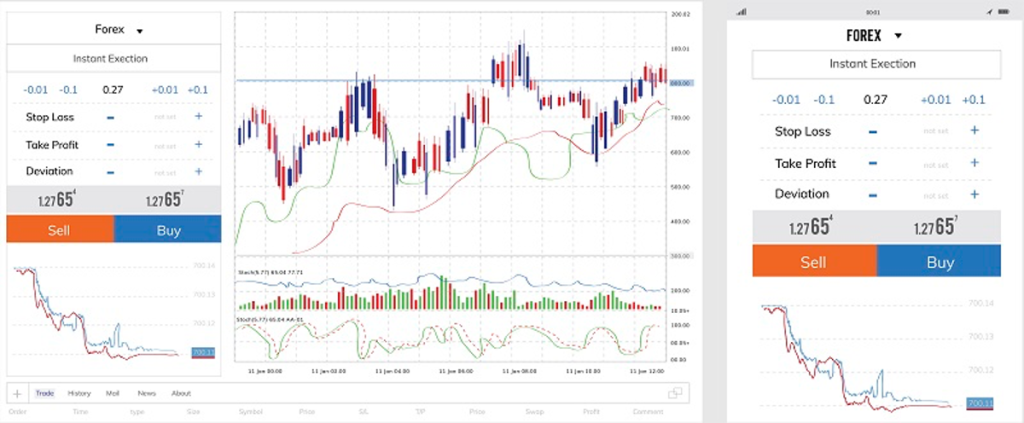
Copy trading, as you might have guessed, enables you to automatically mirror the trades of successful traders without the need for manual market analysis. To understand how copy trading functions, read further.
What Exactly is Copy Trading?
The term “copy trading” refers to an investment strategy whereby one “copies” the trades of more successful traders. This can be done automatically or manually, depending on the person’s preference for copy trade.
Find a successful trader on a platform that facilitates copy trading, and that’s all the homework you’ll have to do. The trading performance of professional traders can be easily filtered through on most platforms, allowing you to quickly zero in on the one that is a good fit for your own trading style and comfort level.
Before putting any real money into a position or market through copy trading, it is recommended that you first do your own research into the position or market. Keep in mind that the safety of your money is not guaranteed, even if you are copying the strategies of an experienced trader.
How Does Cryptocurrency Copy Trading Work?
The notion of copy trading is applicable to all markets worldwide. Copy trading allows you to trade in a wide variety of markets, including foreign exchange (Forex), cryptocurrencies, metals, commodities, and stocks.
Most investors who seek to duplicate the trades of successful traders care more about the results those traders have had trading than they do about the markets itself. You can choose to restrict your copy trading to a specific asset class, such as cryptocurrency.
Professional traders that keep up with the crypto ecosystem typically have an in-depth understanding of the underlying technical workings of the various cryptocurrencies. If you lack the knowledge and experience to trade cryptocurrencies successfully, it makes sense to replicate the trades of those who do.
The Advantages and Disadvantages of Copy Trading
The idea of “copy trading” is appealing: you may effortlessly copy the deals of skilled traders with little effort, and then reap the rewards of those trades. But as the saying goes, “you can’t get something for nothing,” especially when it comes to the markets. These are the primary benefits and drawbacks of copy trading.
Advantages of Copy Trading
Automated Trading
Copy trading allows you to automate your trading process by following the trades of other successful traders. This is the primary benefit of copy trading. Finding a successful trader with a proven track record and monitoring their results on a regular basis is all that’s required of you.
Finding Traders
Another perk of copy trading is how easy it is to discover a successful trader to copy. The majority of copy trading platforms permit you to sift through many metrics on their websites.
These metrics often include trading results, profit and loss, the standard size of winning and losing deals, average risk per transaction, reward-to-risk ratios, and other metrics.
No Emotions
It’s likely that if you’re new to trading, you’ve already discovered that your emotions can have a significant bearing on the outcomes of your trades. Trading based on your emotions is no longer necessary when you use copy trading.
There is no room for emotion because you are not required to perform independent market analysis or trades in this situation.
Disadvantages of Copy Trading
Unable to Control Risk
The most significant disadvantage of copy trading, which you might have guessed before, is that it makes your own trading performance entirely dependent on the performance of the traders whose trades you follow. Any negative trades they make will reflect in your account as well.
This major shortcoming can be avoided by using a copy trading platform, which lets you choose how much of your capital to invest with each trader and how much of your capital you are willing to lose on any given deal.
You also have the option to intervene and close a trade manually if you believe that the copy transaction isn’t doing as well as it could be.
Is Copy Trading Profitable?
Your financial success in copy trading is entirely predicated on the success of the traders you choose to follow. To put it another way, you have a strong chance of success if you follow a trader who boasts a history of consistent profitability.
When you copy trade, you put yourself in a position where you could lose money in a number of different ways.
1. Market Risk
The most obvious danger that comes with copy trading is the risk of the market. Every live trade will invariably be affected by a wide range of market forces, the sum total of which will eventually determine the outcome of the trade.
When copy trading, “market risk” refers to the possibility that the prices of various assets, such as Forex, stocks, interest rates, and other assets, could fluctuate in a way that would be detrimental to your duplicated trades.
2. Liquidity Risk
In copy trading, the issue of having insufficient liquidity is frequently ignored. You will be subject to liquidity risk because you will not be able to exert direct control over the trades that are opened by the trader that you are following.
When you (or the traders you follow) are concerned about being unable to close a deal at a specific price in a timely manner, this is known as liquidity risk. Without a willing seller, a buy order cannot be made. On the other hand, you won’t be able to sell anything if there isn’t someone who wants to buy it.
Additionally, trading with illiquid instruments like exotic Forex pairs, exotic cryptocurrencies, or small-cap equities typically entails a higher level of liquidity risk. Trading right after the market opens or right before it closes can put you at risk of liquidity issues because there are not yet a lot of people trading at those times.
3. Systematic Risk
Last but not least, one of the most significant risks that might have a negative effect on your transactions is the systematic market risk. Since systematic risk is built into the market as a whole, it cannot be mitigated by spreading your investments out.
Conclusion
For portfolio management purposes, “copy trading” entails copying the moves of a successful trader in order to achieve similar results. Trading can be executed automatically in an automated variant of copy trading.
If the software is available in a manual form, the investor can make their own trades. When using one’s own judgment, as is possible with the manual version, one can anticipate returns that differ from the copy trader’s previous results.
Only a fraction of one’s total investment funds should be made available to any given copy trader. If a trader has a set amount of money set aside to imitate traders, they should spread it around so as not to put all their eggs in one basket.
When engaging in copy trading, traders expose themselves to a number of potential dangers. The most common type of risk is market risk.
Before putting money in danger, make sure you’re okay with the copy trader’s maximum drawdown. This is the potential decline in resources from its peak to its bottom.
Because of this, even if a trader has a high rate of success in the past, a follower who joins the bandwagon while the trader is at the height of his powers runs the risk of experiencing a rough patch in their trading results.









